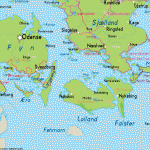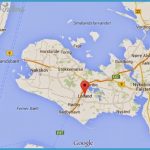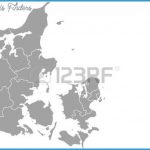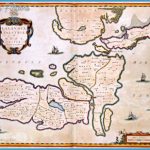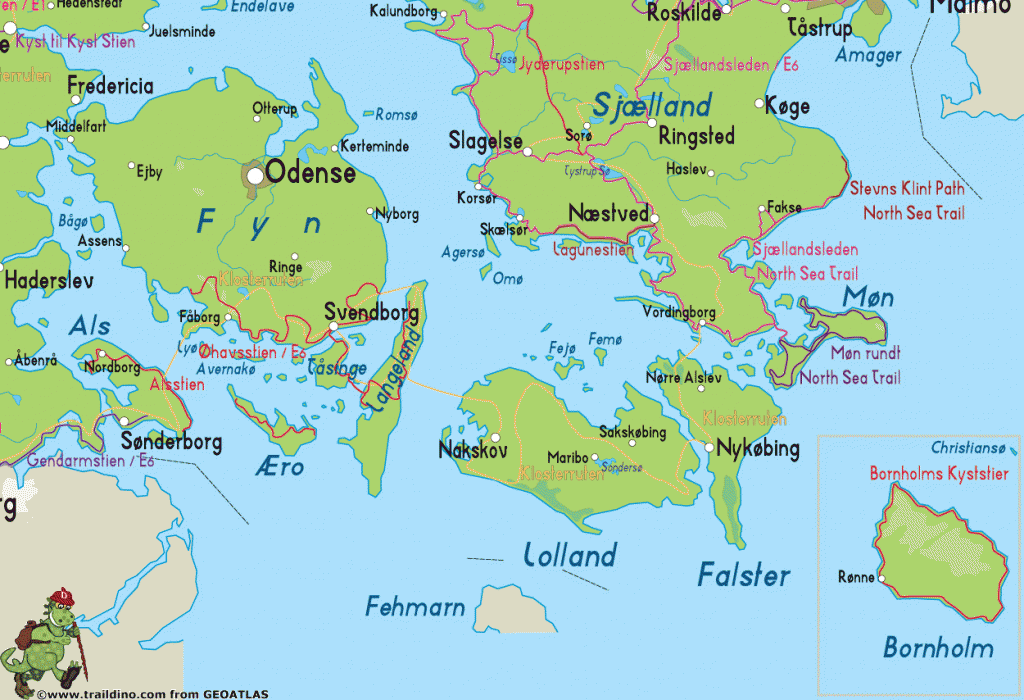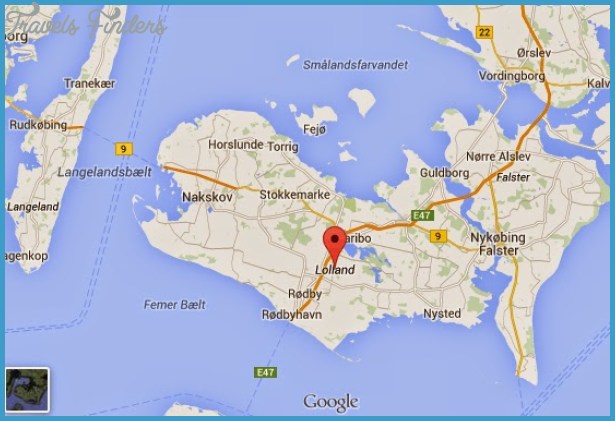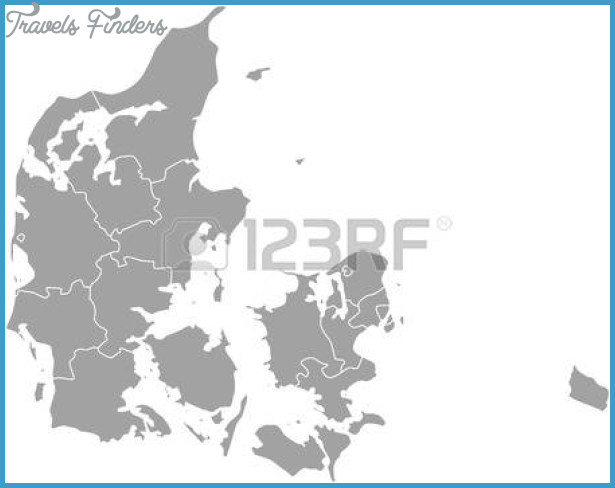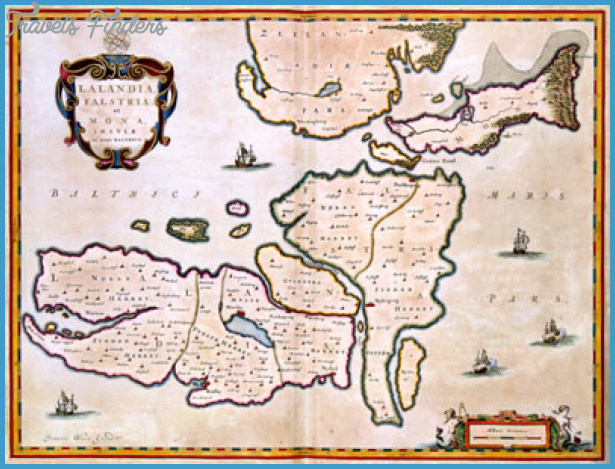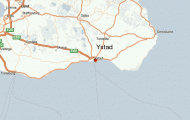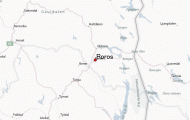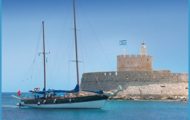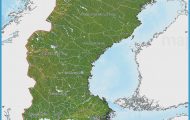County: Storstroms amt.
Area: 121 4 sq. km (470 sq. miles).
Population: 80,000.
T Maribo Tourist Information Office,
Jembanegade 8,
DK-4930 Maribo; tel. (03) 88 04 96.
Nakskov Tourist Information Office,
Axeltorv,
DK-4800 Nakskov; tel. (03) 92 21 72.
Nysted Tourist Information Office,
Adelgade 65,
DK-4880 Nysted; tel (03) 8719 85.
Rodby Tourist Information Office,
Havnegade 19,
DK-4970 Rodby; tel. (03) 90 50 43.
Sakskobing Tourist Information Office,
Torvet 1,
DK-4990 Sakskobing; tel. (03) 89 4010.
Lolland, lying W of Falster, is the third-largest Danish island (if Greenland is not counted), coming after Zealand and Funen. It has relatively little industry; the largest enterprises are in the area round Nakskov. The main economic activity is the growing of sugar-beet, with sugar refineries at Nakskov and Sakskobing. Fishing, formerly of importance, has declined considerably. Thanks to the ferry services Lolland now attracts tourist and vacation traffic. The islands of Lolland, Falster and Mon, with the adjoining smaller islands, are known in Denmark as the South Sea islands.
Lolland lies on the direct route from Germany to Copenhagen, known as the Fugleflugtsline (As the crow flies line), linking with a ferry service from Puttgarden in Germany to Rodby (reservations necessary in summer). Lolland is connected with Falster by two bridges over the Guldborgsund, and with Lange-land and Funen by a ferry from TSrs, near Nakskov.
Tour of Lolland. The ferry from Puttgarden docks at Redbyhavn, from which E4 runs to Copenhagen (highway (motorway) to Sakskpbing, then a good main road, and from Ronnede on Zealand motorway again). Observing the Danish speed limits and the penalties for exceeding them are severe, even for visitors a motorist can cross Zealand in just over half an hour. Those who are less pressed for time will find it worthwhile to pause in Rodby (pop. 5000; Danhotel, 80 Euro Motel, Sadinge, 74 b.). The town was once a port (and visitors can still see a half-timbered warehouse beside which boats were moored); but it was subject to frequent flooding and was cut off from the sea by a system of dikes. A column in Norregade shows the high-water mark ofthe great flood of 1 872. 6 km (4 miles) NW of Rodby is Tirsted church, a brick Romanesque church (notable tower and 1 5th c. frescoes).
17 km (10 miles) from Rodbyhavn is Maribo. Just before reaching the town, turn left into A7 (signposted Nakskov). A short distance along this road, on the left, is Qstofte church, another brick Romanesque church, with a Gothic tower and porch, 1 5th c. vaulting in the nave and a transept (1656). The choir has well-preserved frescoes of Old Testament scenes (c. 1400). Farther on is Stokke-marke, which has a church with a massive tower.
IMakskov, on the Nakskov Fjord (pop. 16,000; Harmonien Hotel, 54 b.), is an industrial town with Denmark’s largest sugar refinery and a shipyard. St Nicholas’s Church is Gothic, with a three-tier Baroque altar. Narrow medieval lanes in the middle of the town; old houses between the harbour and Axeltorv, the main square, in which are an old pharmacy and a half-timbered house, Theisens Gird. From TSrs, 1 3 km (8 miles) NW of Nakskov, there is a ferry (1 hour 20 minutes) to Spodsbjerg on Langeland.
Along the S coast of Lolland are the finest beaches on the island, from Maglehoj Strand in the W to Drummeholm to the E They are primarily sandy beaches.
To the N of Nakskov is Lojtofte church, a small Romanesque church without a tower, containing a magnificent font and a sandstone sculpture (1100) by the
Gotland artist known as the Master of the Christ in Majesty. The road continues to Kong Svends Hoj, a Neolithic passage grave, and Kragenass. There are car ferries from Kragenaes to the islands of Feje and Feme (good sailing).
Instead of continuing to Kragenaes you can bear right along the main road, which runs past the ruined castle of Ravnsborg (attractive view ofthe Smcilandsfarvand). 1 3 km (8 miles) farther on is Bandholm (car ferry to Asko), the port of Maribo. An old steam train runs between Maribo and Bandholm on summer weekends. Tothe S of Vandholm stretches Knuthenborg Safari Park, the largest manor-house park in Scandinavia (600 hectares 1 500 acres), laid out in the English style in the 1 9th c. and converted to its present use in 1 970. The park, which is surrounded by a wall 8 km (5 miles) long with four gates, contains a unique collection of about 500 species of deciduous and coniferous trees from all over the world, seven miniature castles and Denmark’s largest collection of antelopes, giraffes, zebras, camels, rhinoceroses, elephants, ostriches and monkeys. A motor road runs through the park and through an enclosure containing Bengal tigers. There is also a children’s zoo, with pony rides.
Beyond Knuthenborg the road runs into A7, which soon reaches Maribo.
Maribo (pop. 5000; Hvide Hus Hotel, 94 b„ SP; Ebsenshotel, 28 youth hostel; camp site) lies in a beautiful setting on the Sonderso, in the heart of Lolland. The town grew up around Maribo Abbey in the 1 5th c. Only ruins remain of the abbey, in a garden immediately N of the church (beautiful view of the lake). Maribo Cathedral was built between 1413 and 1470 as the church of a Brigittine abbey and has two choirs, one for monks and the other for nuns. The plan of the church is roughly similar to that of the church designed by St Bridget for the mother-house (principal church) of her order at Vadstena in Sweden: Maribo was the first daughter-house of Vadstena Abbey. Maribo Cathedral, however, departs from the prescribed form by having a broad central aisle of greater height than the lateral aisles. In the S aisle are a late 15th c. triumphal crucifix and a High Renaissance painted pulpit. Maribo also has an interesting museum (historical section; art collection) and an open-air museum of farmhouses and other buildings reflecting the old peasant culture of Lolland and Falster. There are pleasant walks around the Maribo lakes (on the N side Engestofte manor-house, opposite it Soholt, with a French-style garden). Particularly beautiful is the Rogbolleso, with old oak-trees along its shores.
From Maribo E4 continues to Sakskobing (pop. 4400; Sakskobing Hotel, 39 b.). 4 km (2 miles) NE is the little Renaissance manor-house of Berritsgard, which has an octagonal tower with a copper roof. In a beautiful setting on the Sakskobing Fjord lies Orebygard. 4 km (2i miles) NWofthe town stands a 16th c. manor-house, remodelled in late Renaissance style in 1872-4. The motorway (highway) ends just beyond Sakskobing, and E4 continues NEto Guldborgand overthe bridge to the island of Falster. A7 branches off on the right and runs SE towards Nykobing (Falster), coming almost immediately to Radsted, with a Neolithic dolmen and, close by, the fine manor-house of Kren-kerup, first referred to in the time of
Queen Margaret. Just before Nykobing a road goes off to the right and runs SW to Nysted (17 km 11 miles), passing Frejlev Forest (Bronze Age remains; sanctuary).
Nysted, an attractive little place, is the most southerly town in Denmark and one of the smallest (pop. 1230; Den Gamle Gcird, 60 SP). The town, which received its charter in 1409, grew up around Alholm Castle, a massive 12th c. structure resembling a pirates’stronghold. The oldest part is the NE tower. In the Stubberupgard, near the Castle, is the Automobile Museum, Denmark’s largest collection of cars, ranging from the 1 890s to 1936. All the cars are in good condition and in running order. There is also a model railway layout 600 sq. m (700 sq. yds) in size, with scenery reproducing that of Switzerland, Italy and Germany. A steam engine draws a train down to the bathing beach. In the town itself, which has preserved its original layout, there is a 15th c. Gothic church, with a massive tower of a later date topped by a tall copper steeple.
An alternative route back to the main traffic arteries from Nysted is on a road running W; it rejoins the motorway (highway) in 21 km (13 miles), passing through Holeby, one of the smallest townships in Denmark but so widely scattered that it can claim to have the country’s longest main street.

